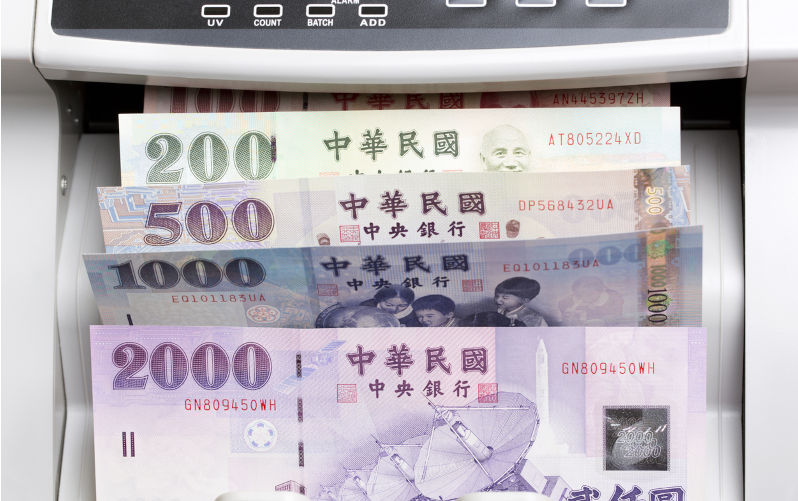US economic statecraft must catch up to its Taiwan strategy
July 9, 2025
Taiwan’s global economic role has made it indispensable to regional stability in East Asia and for the US’ strategic goals.
But from 2–5 May 2025, the Taiwan dollar surged nearly 10%, triggering Taiwan’s third-largest single-day foreign exchange trading volume, catching exporters off-guard and throwing economic forecasts into disarray. Washington’s subsequent announcement of an interim tariff deal with Beijing left Taiwan isolated and anxious. As Taiwan reels from violent currency swings and tariffs, uncertainties around the importance of Taipei to Washington’s economic and strategic calculus remain.
From semiconductor investments and weapons purchases to liquefied natural gas imports, Taipei has consistently approached the Trump administration co-operatively and with humility. In May 2025, Taiwan’s representative to Washington cited plans to invest US$3 billion in AI infrastructure and supercomputing to support shared innovation and national security objectives. But despite this alignment, Taiwan remains entangled in stalled trade negotiations, flagged on the US Treasury’s currency watchlist and subjected to double taxation.
This reflects a long-running disconnect between US economic tools and strategic commitments. For Taiwan, the economic and strategic consequences of this misalignment are potentially existential.
The Trump administration has urged partners to increase defence contributions, but Taiwan’s ability to do so remains constrained by structural economic factors. While Taipei plans to increase defence spending to 3% of GDP, a significant downturn would likely curtail fiscal flexibility. Its defence acquisitions often rely on ad hoc special budgets funded by surpluses and debt issuance, which are flexible during periods of growth, but fragile during downturns.
A trade-driven slowdown would also ripple through Taiwan’s domestic defence industry. Roughly 64% of its military systems are produced locally, often by contractors linked to commercial export sectors, particularly machinery and electronics. Key programs include supersonic missiles, air defences and maritime capabilities. But shocks to commercial exports would squeeze the broader industrial base, forcing defence firms to cut back on production, talent retention or research and development, undermining Taiwan’s ability to field timely and scalable capabilities.
These dynamics carry significant operational implications. US defence planning has long hinged on the assumption that Taiwan can withstand any initial aggression long enough for external reinforcements to arrive. A weaker defence posture could reduce Washington’s strategic flexibility and raise the costs of intervention. Over time, failure to address these vulnerabilities may erode broader regional deterrence.
A classified US Defence Department memo released in March 2025 identified Taiwan’s defence as a top US priority, briefly restoring confidence in strategic alignment. But continued economic pressure and stalled negotiations demonstrate that, while Taiwan is central to US Indo-Pacific posturing, it remains persistently sidelined in its economic statecraft.
Though Taiwan is often grouped with Japan and South Korea in discussions of US partnerships, its vulnerabilities are distinct. It lacks formal treaty guarantees, has a far smaller economic base and faces relentless military coercion from China. These differences demand tailored policies that reflect Taiwan’s unique position.
Taiwan’s recurring inclusion on the US currency watchlist and the longstanding pressure for Taipei to open its markets to US agricultural and energy exports illustrate broader dysfunction in US economic statecraft. While often framed as “fair trade” measures, these dynamics routinely trigger political backlash in Taipei and feed growing public scepticism towards Washington, eroding the trust and unity essential for deterrence to work.
Washington’s military and economic initiatives have frequently operated along parallel but unco-ordinated tracks. This lack of integration is now generating uncertainty to allied deterrence, weakening security partnerships and threatening to unravel decades of US efforts to maintain peace and stability in Asia.
Historically, the United States recognised economic stability as the cornerstone of strategic resilience, extending aid as calculated investments in deterrence. The Marshall Plan helped Western Europe to restore prosperity and prevented the spread of communism. After the Chinese Civil War, Washington extended economic aid to Taiwan to preserve stability across the Taiwan Strait.
Today, Taiwan occupies a similarly exposed position, but US foreign policy lacks the same foresight. If Washington fails to reinforce Taiwan’s economic and defence resilience, it risks creating vulnerabilities Beijing could exploit diplomatically, economically and militarily.
Washington must pay closer attention to the long-term coherence of its foreign policy. Defence, diplomatic and trade instruments are most effective when aligned and mutually reinforcing. Key partners that are force multipliers for regional influence deserve differentiated economic strategies. The structure and tempo of negotiations with security partners should match broader geopolitical stakes, not merely transactional outcomes.
The _Taiwan Assurance Implementation Act_ — which passed the US House on 5 May 2025 — reiterates Taiwan’s importance to US interests and mandates routine updates to previous legislative commitments. But it does not explicitly address the widening misalignment between trade, finance and security policy. More deliberate Congressional oversight may be needed to bridge that gap.
Strategic alignment is not an abstract ideal, but a practical necessity. Taiwan is not just a partner, but a force multiplier for regional deterrence and technological resilience. One-size-fits-all trade tools and outdated assumptions about “level playing fields” do not work when applied to an ally under siege.
It remains unclear how President Trump will manage trade negotiations within his ambitious timeline. But each delay in providing clarity only heightens the difficulties facing allies trying to plan, prepare and deter. For Taiwan, the cost of US policy misalignment will not just be measured in GDP, but in its very capacity to endure.
Republished from East Asia Forum 5 July 2025
The views expressed in this article may or may not reflect those of Pearls and Irritations.
